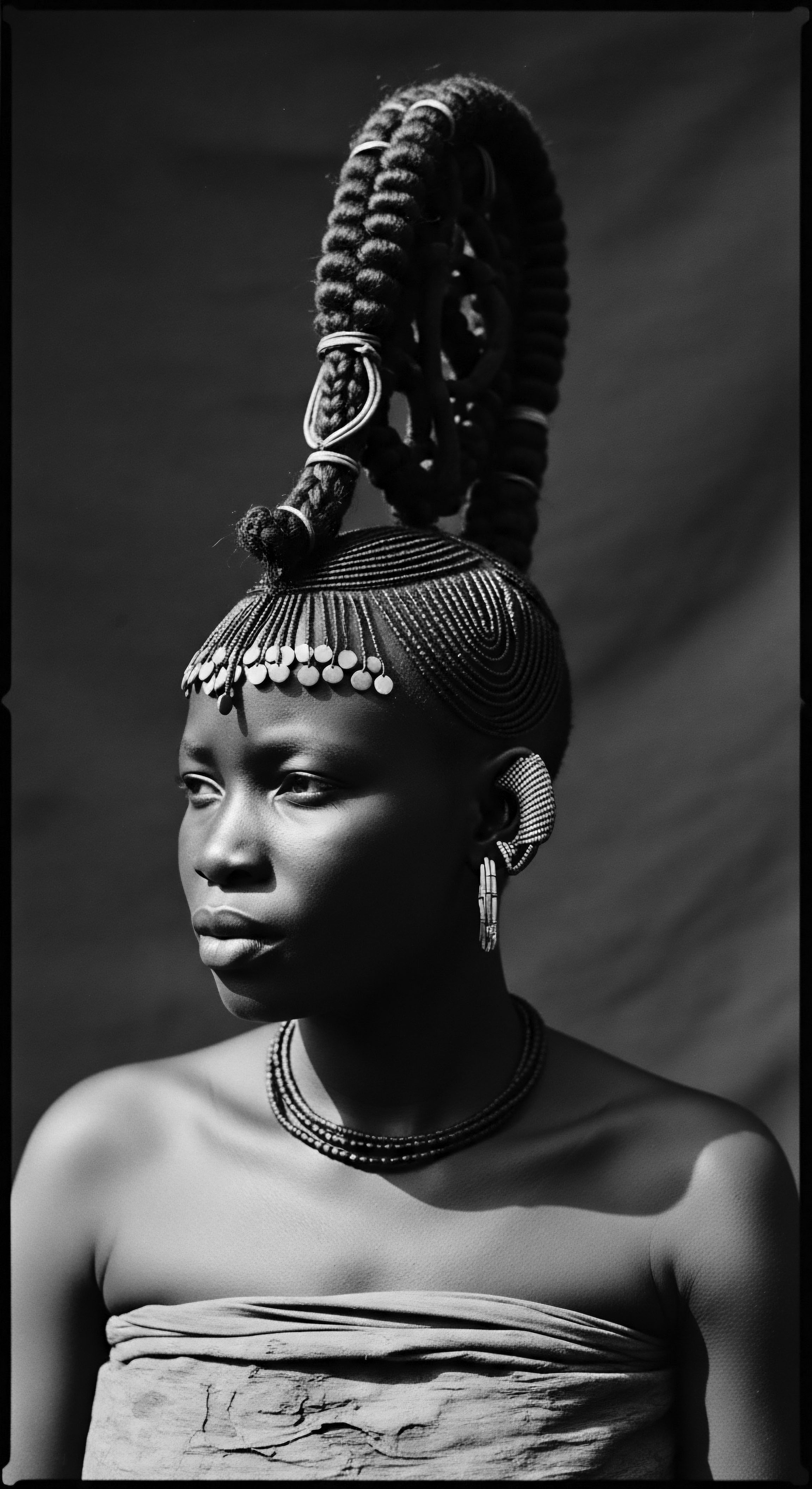
Fundamentals
The understanding we seek when we speak of ‘West African’ in the realm of hair is, at its initial sense, an exploration of a geographic region whose people have profoundly shaped the global narrative of textured hair. This geographical expanse, stretching from the Atlantic coast eastward to the Sahel, encompasses a remarkable array of cultures, languages, and, crucially, diverse hair textures. From the tightly coiled strands that defy gravity with joyous spirit to the softly undulating waves that whisper of ancient riverine histories, the hair phenotypes originating from this land offer a testament to human diversity and resilience.
At its simplest, the term provides a lens through which we begin to trace the very beginnings of many textured hair forms we encounter today. It offers an elemental explanation, a primal designation, linking contemporary hair experiences back to a vast ancestral homeland. Think of it as a foundational statement, signifying a primary point of origin for the genetic markers that predispose individuals to the incredible spectrum of coily, kinky, and tightly curled hair types. This initial designation helps us appreciate the deep-seated heritage woven into every strand, acknowledging that these hair patterns did not simply appear but rather evolved and flourished within distinct environmental and cultural contexts over millennia.

Geographic Context ❉ A Cradle of Diverse Textures
West Africa, a land of ecological variety spanning lush rainforests, expansive savannas, and arid semi-deserts, fostered human ingenuity and adaptation. The populations living across this varied terrain developed distinct cultural practices, including those surrounding hair. These practices were intrinsically tied to the local environment, available resources, and social structures. The meaning of ‘West African’ hair starts here, in the very soil and sky, in the rhythm of life that shaped communities and their self-expression.
‘West African’ in hair heritage begins as a geographical marker, pointing to the ancestral home of diverse, resilient textured hair types and their foundational cultural practices.
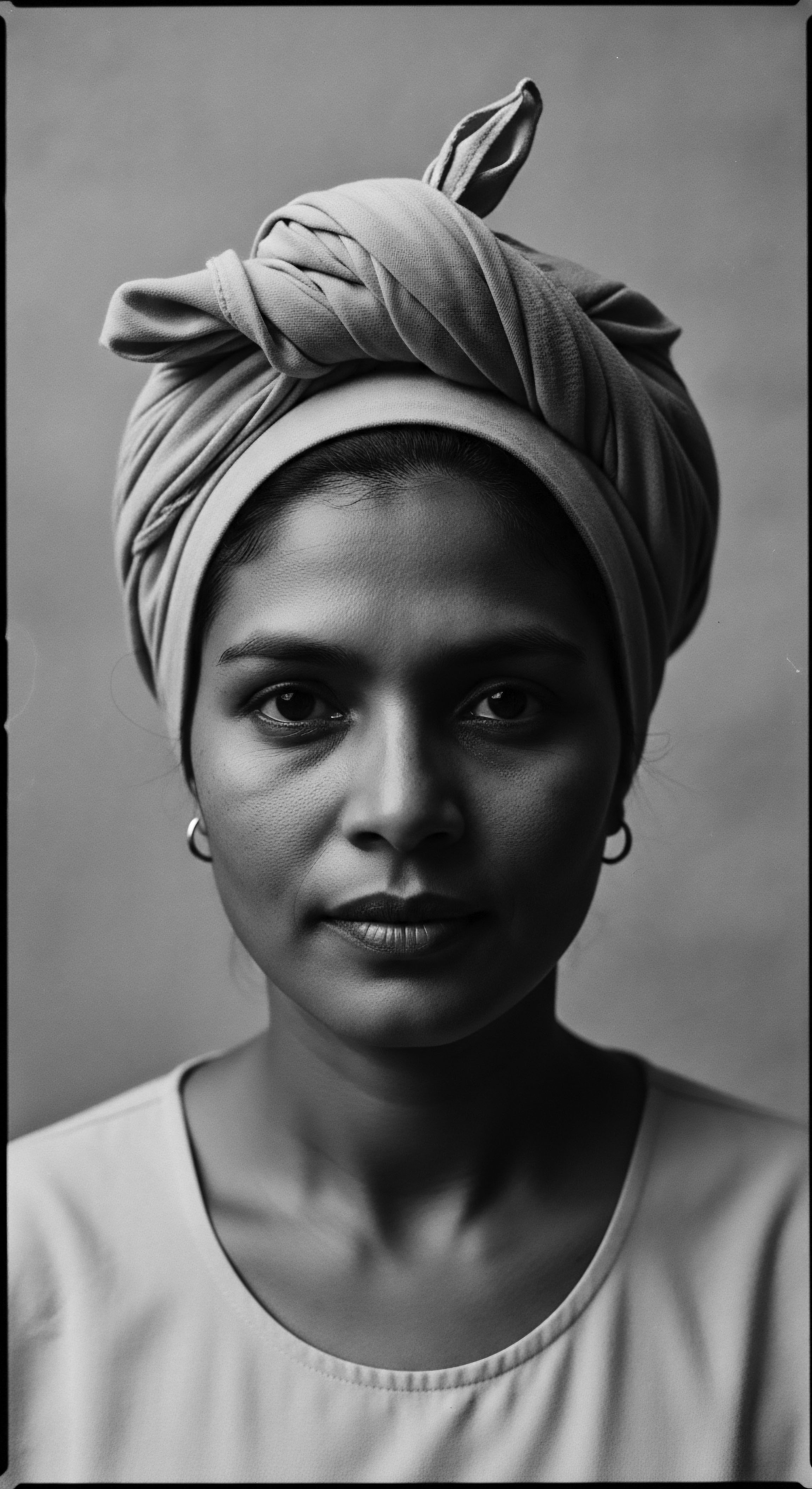
Early Hair Practices ❉ Communal Roots
Across many West African societies, hair care transcended mere aesthetic presentation; it was a deeply communal and often spiritual practice. From the meticulous combing of natural fibers to the application of nourishing plant-based oils and butters, these rituals were passed down through generations, often in gender-segregated spaces where elders shared wisdom with younger members. The preparation of various elixirs from local botanicals speaks to a profound understanding of the hair’s needs, a knowledge accumulated over centuries of observation and communal experimentation.
Consider the simplest tools ❉ the wooden combs, often adorned with symbolic carvings, that gently untangled knots and stimulated the scalp, promoting circulation and growth. These were not just implements; they were extensions of a communal hand, fostering connection and care. The act of tending to one another’s hair built bonds, solidified social structures, and transmitted cultural values. This early, foundational understanding of the West African connection to hair is therefore not merely biological but profoundly social, rooted in a collective commitment to wellbeing and identity.
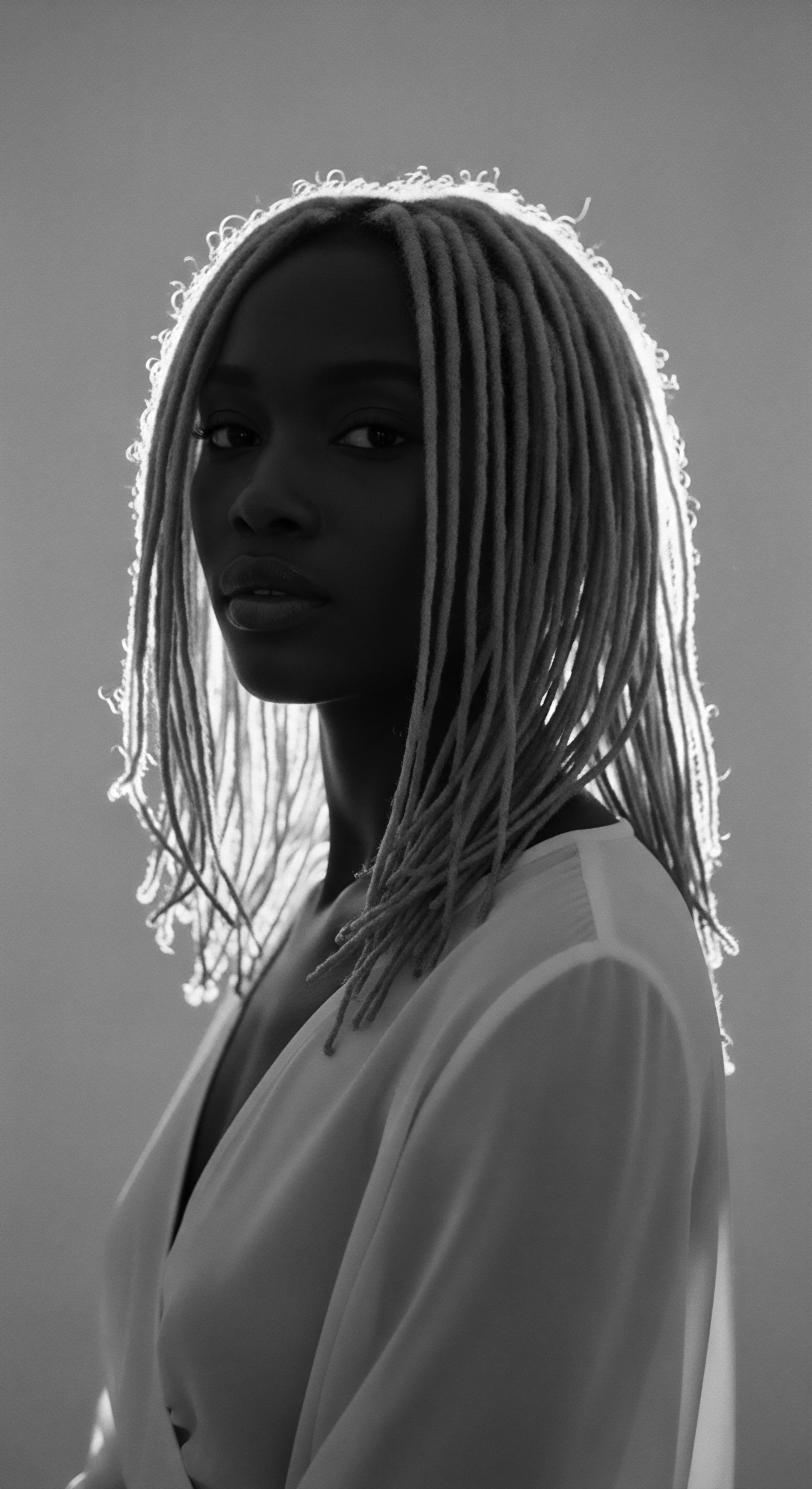
Intermediate
Moving beyond the foundational designation, an intermediate understanding of ‘West African’ in hair heritage delves into the intricate interplay between genetics, environment, and societal structures that have shaped hair experiences. This deeper consideration acknowledges that while a geographical origin is a starting point, the true significance lies in the dynamic evolution of hair practices and perceptions as they moved through history and across oceans. The term ‘West African’ begins to convey a living legacy, a continuous thread connecting past wisdom with present realities.
The West African designation gains further depth by recognizing the specific genetic predispositions that account for the unique characteristics of many textured hair types originating from the region. While general science may describe these textures as ‘kinky’ or ‘coily,’ ancestral wisdom has long understood the inherent strength, porosity, and growth patterns. The intermediate perception bridges this gap, showing how modern scientific inquiry often provides empirical backing for observations held true for generations within West African communities. It is a nuanced understanding, appreciating both the observable phenotype and the rich cultural meaning assigned to it.

Cultural Significance of Strands ❉ Beyond Adornment
In many West African societies, hair carried immense semiotic weight, communicating complex social information about an individual’s identity, status, marital standing, age, and even religious beliefs. Hair was a living canvas, meticulously styled for ceremonies, rites of passage, and daily life. The elaborate patterns braided or twisted into hair were not simply fashionable; they were deliberate visual languages.
For instance, specific braiding patterns could denote tribal affiliation, readiness for marriage, or even convey messages of mourning or celebration. This rich visual vocabulary means that understanding the West African connection to hair extends far beyond biology; it becomes a study in communication and communal belonging.
Beyond genetics, ‘West African’ signifies a rich cultural lexicon where hair communicates identity, status, and collective narratives through intricate patterns and ritualistic care.

Tools and Traditions ❉ The Craft of Care
The tools and methods of West African hair care were developed over centuries, demonstrating ingenious adaptation to available natural resources and a profound appreciation for the hair’s inherent qualities. Unlike many cultures that might prioritize altering hair texture, many West African traditions focused on enhancing and protecting the natural form. This often involved the extensive use of oils, butters, and herbs derived from the indigenous flora.
Consider the array of natural ingredients that formed the backbone of these ancestral hair rituals. From the shea butter produced from the nuts of the Vitellaria paradoxa tree, known for its deep moisturizing properties, to the saponins in ingredients like soap nuts used for gentle cleansing, the traditional pharmacopoeia was vast and effective. These practices were rooted in a holistic view, where hair health was interwoven with overall well-being and a respectful relationship with the natural world. This intermediate exploration thus clarifies how the West African heritage manifests through specific, time-tested methods of care that continue to influence textured hair practices globally.
- Shea Butter (Kari) ❉ Derived from the shea tree, a staple across the Sahel, it offers exceptional emollient properties, protecting hair from dryness and promoting elasticity.
- Chebe Powder ❉ Hailing from Chad, this finely ground mix of Croton Gratissimus, Prunus Mahaleb, and other elements, when combined with oil and water, helps retain moisture and strengthens strands.
- African Black Soap ❉ Traditionally crafted from plantain peels, cocoa pods, and shea tree bark, this gentle cleanser purifies the scalp without stripping hair’s natural oils.
- Fenugreek Seeds ❉ Often used in infusions or pastes, these seeds possess mucilage that provides slip for detangling and proteins that nourish hair follicles.

Academic
The academic elucidation of ‘West African’ concerning hair moves beyond simple geographical or cultural references to a rigorous examination of its profound and enduring influence on textured hair heritage, identity formation, and resistance across the global Black and mixed-race diaspora. This perspective critically analyzes the complex interplay of biological anthropology, ethnohistory, cultural studies, and sociological dynamics, revealing how the concept of ‘West African’ serves as a crucial framework for understanding hair’s deep historical roots and ongoing significance. It is not merely a label, rather it is a dynamic signifier of a shared ancestral lineage, a testament to resilience, and a living archive of embodied knowledge.
At its core, the academic meaning of ‘West African’ hair encompasses the genetic patrimony, the rich tapestry of pre-colonial cultural practices, and the profound adaptation and retention of these practices in the face of forced displacement and systemic oppression. It acknowledges that hair, originating from these diverse populations, possesses specific structural characteristics—namely, the elliptical cross-section of the hair shaft and varied patterns of curl and coil—that distinguish it from other hair types and demand particular methods of care and styling. Yet, this academic designation extends far beyond mere biology; it delves into the semiotic power of hair as a medium for self-expression, communal solidarity, and a tangible link to a collective past. It is an exploration of identity, survival, and the persistent flourishing of culture.
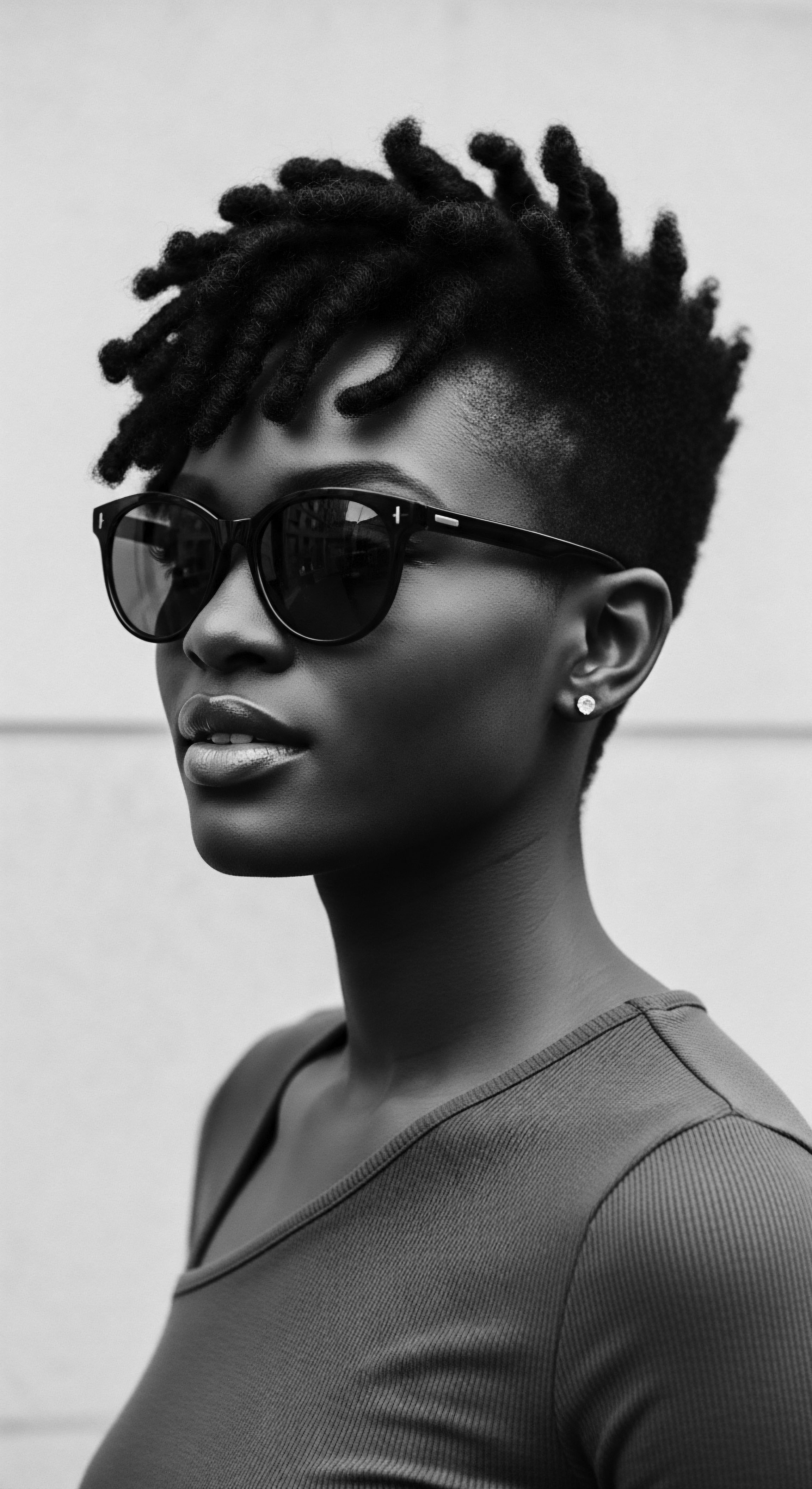
The Genetic and Phenotypic Tapestry ❉ A Lineage of Resilience
From an anthropological standpoint, the diversity of hair textures observed in West Africa reflects millennia of human genetic variation and adaptation. Research in population genetics indicates a high degree of heterozygosity within West African populations, contributing to the wide range of hair patterns observed. For instance, studies on the genetics of hair morphology point to specific genetic loci, such as those within the EDAR gene, as contributing to the tightly coiled hair phenotype prevalent in many West African groups.
This biological foundation is crucial, as it underpins the elemental differences that demand unique approaches to hair care and styling, distinguishing West African textured hair from other global hair types. The academic lens allows us to appreciate how these inherent characteristics, initially adapted to specific environmental conditions, became central to cultural identity long before modern scientific inquiry.
Academic analysis of ‘West African’ hair reveals a complex interplay of genetic heritage, cultural practices, and historical resilience that extends deeply into diasporic identity.
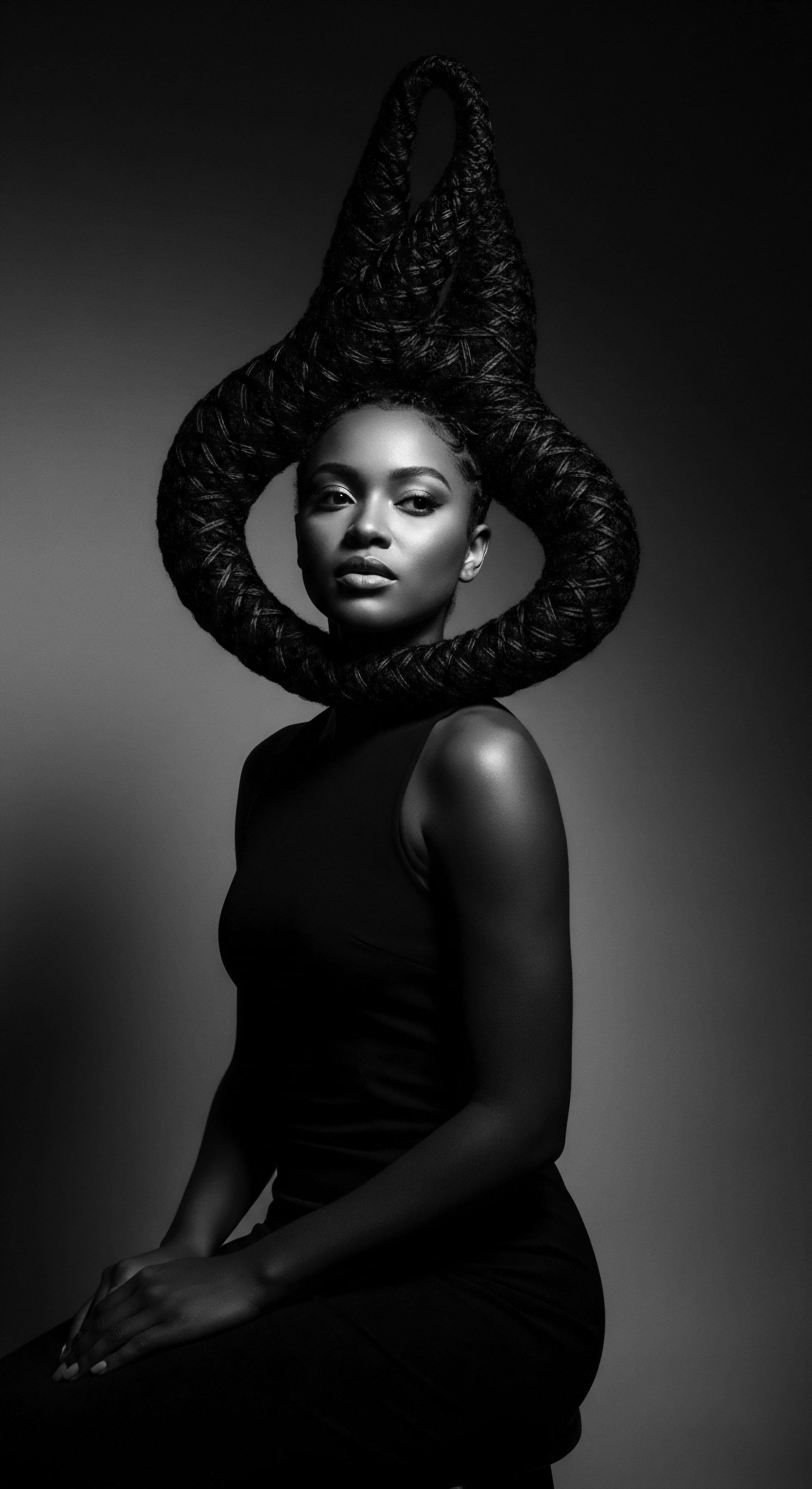
Colonial Echoes and Diasporic Shifts ❉ Hair as a Cultural Archive
The transatlantic slave trade initiated a profound and devastating rupture, yet it also catalyzed a remarkable persistence of West African hair traditions in the diaspora. Academically, this period provides a compelling case study in cultural retention and resistance. Enslaved Africans, stripped of their names, languages, and lands, meticulously preserved aspects of their hair culture as acts of defiance and continuity. Hair became a coded language, a covert communication system, and a repository of ancestral memory.
A potent historical example, often referenced in cultural studies but deserving deeper academic scrutiny, is the practice of utilizing intricate braiding patterns as covert maps or storage for precious resources during the era of enslavement. In many West African societies, the act of braiding was already a sophisticated art form with embedded social and spiritual meanings. When transported across the Middle Passage, this skill was repurposed.
Accounts and ethnographic research suggest instances where enslaved individuals, particularly women, would braid rice grains into their intricate hair patterns before being forced onto slave ships. These grains, carried secretly within the coils and braids, represented not only a potential source of sustenance but also the seeds of their ancestral lands, embodying a desperate hope for agricultural continuity in a stolen world.
| Traditional West African Hair Practice Intricate Braiding Patterns (e.g. Fulani braids, Yoruba patterns) |
| Diasporic Adaptation & Significance (Era of Enslavement) Used as covert cartography, mapping escape routes through their winding lines and knots, a visual language for freedom. |
| Traditional West African Hair Practice Hair as a Repository for Seeds/Valuables |
| Diasporic Adaptation & Significance (Era of Enslavement) Rice grains and other seeds braided into hair, preserving agricultural heritage and providing a hidden source of sustenance. |
| Traditional West African Hair Practice Communal Hair Grooming Rituals |
| Diasporic Adaptation & Significance (Era of Enslavement) Maintained as clandestine gatherings, offering moments of solidarity, shared ancestral knowledge, and emotional support amidst brutal conditions. |
| Traditional West African Hair Practice Use of Natural Oils and Plant-Based Cleansers |
| Diasporic Adaptation & Significance (Era of Enslavement) Substituted with available materials (e.g. ashes, animal fats), demonstrating adaptive ingenuity to maintain hair health and cultural aesthetic. |
| Traditional West African Hair Practice These adaptations underscore the profound resilience and ingenuity inherent in West African hair heritage, transforming practices into powerful tools of survival and cultural preservation. |
Moreover, beyond sustenance, historical analyses indicate that certain complex braiding styles were indeed used as mnemonic devices, functioning as abstract maps or signals within enslaved communities. Anthropological work on the cultural retentions in the Caribbean and Americas often points to the persistence of specific West African aesthetic principles in hair styling, suggesting that even as external pressures forced conformity, an internal, unspoken visual language continued to thrive. This transformation of ancestral practices into tools of survival and resistance provides a compelling instance of cultural dynamism under duress, underscoring hair as a vital cultural archive.
The meticulous preservation of these hair traditions, despite the immense challenges, points to the deep psychological and communal significance of hair. It was a tangible link to home, a non-verbal affirmation of self and lineage in a world designed to strip individuals of their identity. This historical example powerfully illuminates how the West African connection to textured hair heritage extends beyond mere beauty; it became a conduit for survival, a symbol of agency, and a powerful, silent act of resistance, the significance of which continues to resonate through generations.

Hair as a Living Archive ❉ Sustaining Ancestral Knowledge
Contemporary academic perspectives on ‘West African’ hair also examine its role in the ongoing reclamation of identity and self-affirmation within diasporic communities. The resurgence of natural hair movements globally is deeply rooted in this West African heritage, signaling a collective embrace of textures that were historically denigrated by colonial and post-colonial beauty standards. This movement, supported by scholarship in Black studies and cultural sociology, highlights how understanding and celebrating West African hair forms and care practices contributes to psychological wellness, cultural pride, and a decolonization of beauty ideals.
The academic definition, then, encompasses not just the past but the continuous, living influence of West African heritage on present-day hair discourse. It considers how ancestral wisdom, once transmitted orally and through practice, is now being documented, researched, and celebrated, offering new insights into the efficacy of traditional ingredients and techniques. This deep, analytical understanding of West African hair allows us to see it not as a static concept but as a dynamic, evolving phenomenon, profoundly shaped by history and actively shaping contemporary identity and expressions of beauty.

Reflection on the Heritage of West African
As we consider the myriad layers of ‘West African’ as it relates to hair, we arrive at a profound truth ❉ it represents far more than a geographical origin or a set of genetic predispositions. It is a living, breathing testament to resilience, creativity, and the enduring power of ancestral wisdom. From the elemental biology that shapes each coil and curl to the complex cultural meanings woven into every braid, the journey of West African textured hair is a narrative of unwavering spirit. It carries the echoes of ancient ceremonies, the whispers of shared communal care, and the silent strength of resistance against historical tides.
This heritage is not something static, preserved in a dusty museum; it lives within each strand, in the hands that tend to it, and in the hearts that celebrate its magnificent forms. It encourages us to look at our hair not just as a part of our physical selves but as a cherished connection to a vibrant lineage, a visible declaration of continuity and pride. The West African influence reminds us that true hair care transcends superficial treatments, inviting us to honor the deep-seated wisdom passed down through generations, transforming daily routines into acts of profound self-respect and ancestral veneration. In every touch, in every careful styling, we recognize the soul of a strand, inextricably linked to a heritage that continues to inspire and empower.

References
- Byrd, Ayana, and Lori Tharps. Hair Story ❉ Untangling the Roots of Black Hair in America. St. Martin’s Press, 2001.
- Hooks, bell. Hair Sistas. Atria Books, 2011.
- Olukoya, Adeniyi. Traditional Hair Care in Africa. African Heritage Press, 2018.
- Thompson, Robert Farris. Flash of the Spirit ❉ African and Afro-American Art and Philosophy. Vintage Books, 1984.
- Walker, A. On Her Own Ground ❉ The Life and Times of Madam C.J. Walker. Washington Square Press, 2002.
- Banks, Ingrid. Hair Matters ❉ Beauty, Power, and the Politics of African American Women’s Hair. New York University Press, 2000.
- Mercer, Kobena. Welcome to the Jungle ❉ New Positions in Black Cultural Studies. Routledge, 1994.
- Davis, Angela Y. Women, Race, and Class. Vintage Books, 1981.
- Chisom, T. The World of Afro Hair. Sterling Publishing, 1993.
